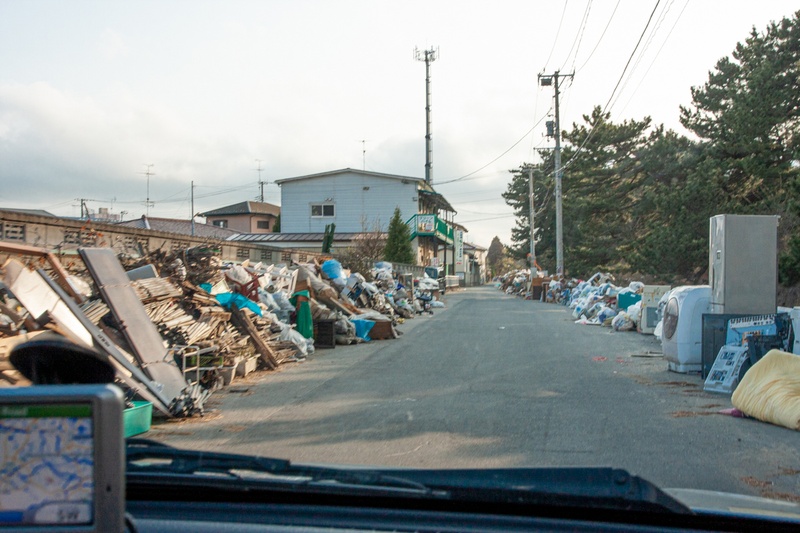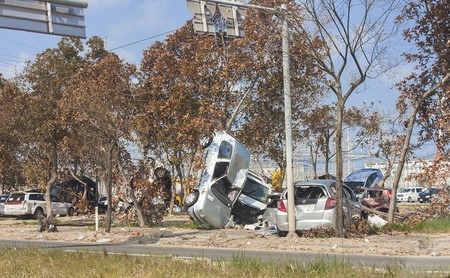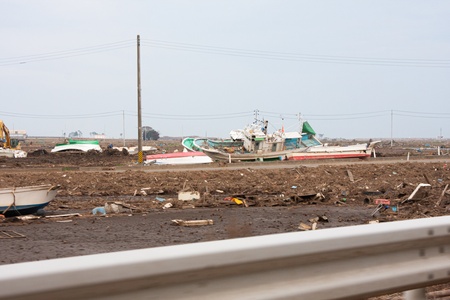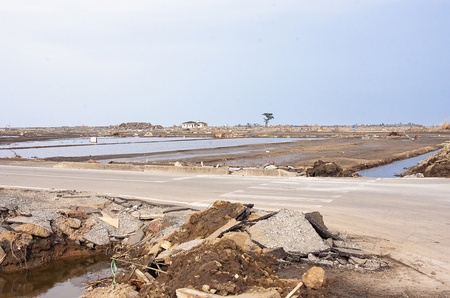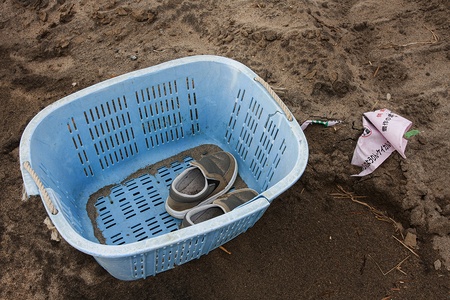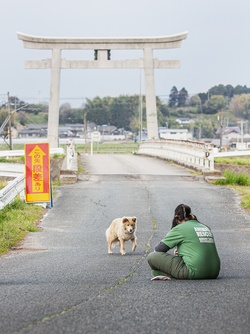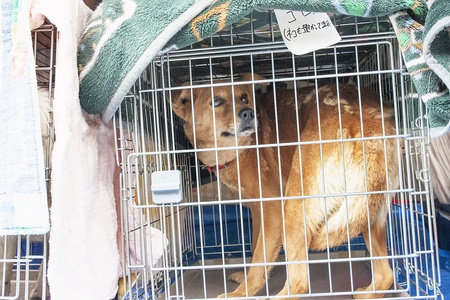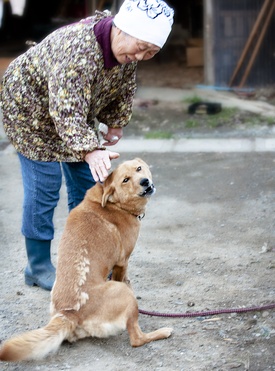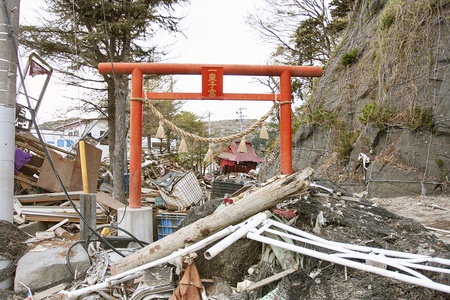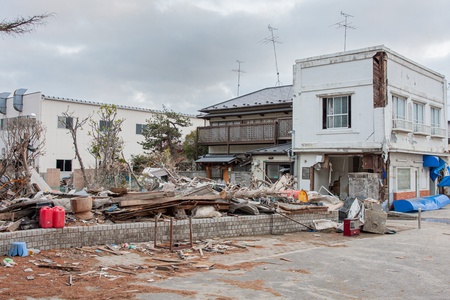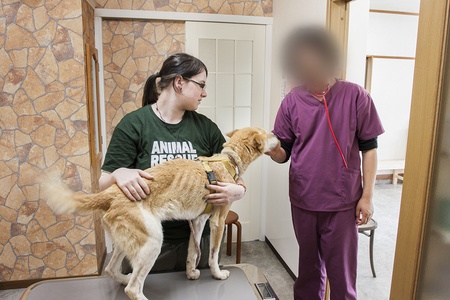We are fast approaching the tenth anniversary of the horrific earthquake and tsunami disaster that was unleased upon Japan on March 11, 2011. The magnitude 9.0 earthquake that hit Japan created a tsunami that flattened a 200-mile stretch (518 km) of coastline, and traveled in some areas as far as six miles inland. The tsunami then caused a triple meltdown at the Fukushima Daiichi Nuclear Power Plant in Fukushima. The fury of mother nature that killed over 18,000 people must never be forgotten. Nor should we forget the animals left behind.
My passion for animals led me to fly to Japan from California with the American animal rescue organization, Kinship Circle, to not only assist in a number of coordinated animal rescues in the Fukushima area but to photograph it as well. Our team served in Fukushima and the surrounding areas in attempts to rescue the defenseless animals left behind.
Residents living within a 20-km zone (7.7 miles) from the nuclear power plant were quickly evacuated to shelters after the disaster. They were NOT told by the Japanese Government that they would NOT be allowed to return, thus leaving their beloved family pets. Their pets, which were family members to them, were left to fend for themselves and slowly starve to death. Photos slowly emerged on Facebook of animals tied outside, some left in the house, and others in cages, some with their bodies left stiff in their attempts to escape. The lucky ones were able to get loose but had to find ways to survive, which as pets, were never taught. Pleas and demonstrations in other areas of Japan begging the government to allow animal rescuers in to the 20-km zone fell onto deaf ears. Hundreds of farm animals left behind suffered the same fate, while the wild animals, boldened by the lack of presence of people, started roaming freely.
I arrived 6 ½ weeks after the disaster. I had forgotten that Golden Week would be celebrated at the end of April. Golden Week is the longest vacation period for the Japanese as it celebrates a number of holidays within the week. For this reason, the government tightened the security around the 20-km zone as many people were coming to the area to volunteer to help those in need, making it much harder to get in.
Some animal rescuers had to sneak into the area through different routes that the government hadn’t yet blocked off, or to wait until dark to pass through. Animals brought to the Japanese government animal shelters at that time were only given a week for their owners to find them before euthanizing them, although due to the disaster, this was extended much longer. However, this sadly meant that other animals could not be taken in at all, or held for long and were euthanized almost immediately. For this reason, we would have to take the animals 4 ½ hours away to Animal Friends Japan in Niigata as they were a no-kill shelter, which was run by an incredibly dedicated Italian woman, Isabella Galleon, and her husband, Naoto. In many areas, they have changed so that they now try much harder to find homes for the animals and will hold them longer.
Driving through the beautiful countryside of Fukushima, with the blue skies and cherry blossoms blooming, it’s easy to forget the dangers of the radiation that permeated the air. The lack of smell, taste, sight, and sound fools one into a false sense of security. We would have to get out and check the levels of radiation as they dropped and rose as the winds carrying them changed.
Here is my journey through photos
Densely populated cities were given first priority in the cleanup of debris by the government. As we drove through Sendai, we were given a first look into the destruction caused by the earthquakes. Debris was pushed off to the sides to make the roads passable. It appeared as if mother nature threw the cars and trucks into the air in jest to see how they may land.
Completely demolished by the tsunami, the coastline in Minami Soma is forever changed. Miles and miles of flattened destruction gave a completely different landscape of the oceanfront towns. The occasional home or tree that somehow survived the onslaught of the water and its debris stood out in sharp contrast. I wondered what went through the minds of the owners of the homes that survived, with their entire neighborhood gone. Or of the neighbor whose homes didn’t make it. We saw people coming to survey their lost properties, looking around to see if they could still recognize where their homes once stood.
I happened upon this basket with a pair of shoes in it. I found it amazing that through the entire ordeal, this pair managed to stay together. Somehow, it gave me a little hope that regardless of the magnitude of the horror, there was still hopes of connection and the staying together.
Amongst the debris of children’s toys, shoes, I found a woman’s purse half opened. This struck me as I tried to imagine what the owner of the purse looked like, what she was doing at the moment of the tsunami, and if she had made it out alive. As much as I wanted to peek inside, my reverence for her kept me from touching it.
We would see dogs running through the area, too scared to come too close. Lindsay Davidson, from Canada, tries to coax a dog to her with food. Many times their fears wouldn’t allow us to get close enough to catch them, as in this case.
Many families outside of the 20 km-zone left their dogs outside and would come back every few days to check on them. Before I left the US, I contacted some companies for donations. Thundershirt, a vet recommended company that makes coats for dogs and cats that apply gentle, constant pressure and proven to be over 80% effective in calming an animal during fireworks, thunder, separation anxiety and more, donated a number of coats to us.
Here Ginny Garrison, US, sits with a dog with a Thundershirt coat we gave him. We would leave notices to the families that we had come by and what the coats did. We also left notices that asked them to contact us if they needed to have their pets kept at the no-kill shelter until they were in a better position to come back.
The animals that were taken to Animal Friends Japan in Niigata would be held there until their families were able to take them back, or had to release them to be adopted out.
There were many we didn’t know if they still had families. However, on one special occasion, a mother had asked for her dog to be returned to her. When we picked up Koro-chan, he was confused and scared as most are. He had no idea he was about to go home and be reunited with his mother. He couldn’t stop jumping for joy once he was back. As we were leaving, I saw a different dog than the one we had picked up—and proudly back at his post guarding his family.
Interestingly, while most homes and building in the town of Ishinomaki were flattened, the shrines and torii (Japanese gate mostly found at the entrance of a Shinto shrine) were still intact.
We received a call of two dogs that were seen running around in Ishinomaki. As this was a smaller town, debris were pushed to the sides of the roads waiting for the government to come clear. Most seaside towns have the smell of natural salty ocean air, but this town had so much uncleared debris that the smell of fish lingered. We looked for hours asking people if they had seen the dogs but to no avail. At one point, as dusk set in and I walked around at an abandoned hospital grounds looking for the dogs, I remembered what rescuer Kate O’Callaghan, from Ireland, had told me. She mentioned that one of the methods the army had to resort to in looking for bodies was to use a sharp stick and poke the grounds. As I walked along, I couldn’t help wondering what may be laying under the layer of debris scattered under my feet.
We would occasionally run into other animal rescue groups. Some were organizations, and some were people who hooked up through Facebook to go out and look to help animals. In all instances, everyone was always eagerly willing to help each other. They would ask if we needed any Tyvex suits (which our organization already provided us with) or if there was anything else we needed.
The outpouring of gratefulness and respect was felt from so many. When we would stop at the local convenience stores, people would offer to buy us coffee, and even on one occasion, broke out in applause when they see us with our “Animal Rescue” shirts on. It truly humbled us especially knowing that these people had just experienced one of the worst disasters the world had seen and here they were, expressing their appreciation for us.
A couple of dogs in Sendai were reported due to their malnourished conditions and brought to our attention. The woman of whom the dogs belonged to were staying at her workplace after she lost her home. We took the dogs to the veterinarian for a checkup and brought back free food and medications for them. The owner had been so traumatized from the tsunami that she had no idea how badly her dogs appeared.
I was asked by the vet to keep his identity secret. He had just moved into town to start his veterinarian practice and had offered free spay and neuter to help those in need. This offended the other vets in town as they said he was taking their business. He told me that he wanted to offer his services for free and was embarrassed that he would have to ask me to make a payment to show others that he was charging. I told him that many people had donated to us to help the animals and I was sure that they would be delighted knowing it was going to providing food and meds for them. He gave me a bill of 5000 yen (approx. $50) which provided food and meds for seven dogs—as well as his time and care! And he was still embarrassed.
© 2021 Lexie Boezeman Cataldo


